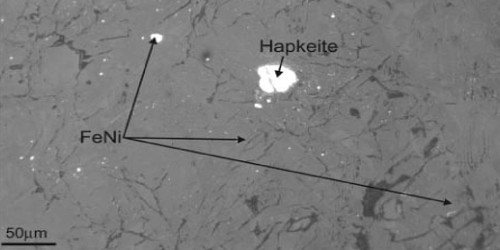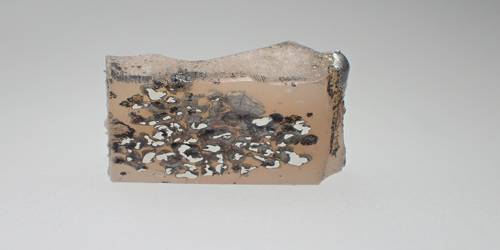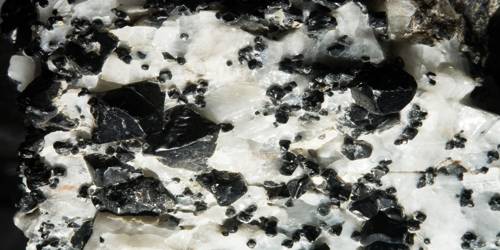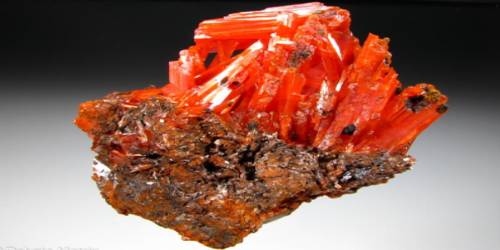Hapkeite is a mineral discovered in the Dhofar 280 meteorite found in 2000 in Oman on the Arabian peninsula. The meteorite is believed to originate from the Moon; specifically, it appears to be a fragment of lunar highland breccia. Due to its 1:2 composition of silicon-iron, hapkeite was given the chemical formula Fe2Si. It is a meteoric mineral composed of silicon and iron.
It is named after Bruce Hapke, who predicted the presence and importance of vapor-deposited coatings on lunar soil grains (space weathering).
General Information
- Category: Native element minerals
- Formula: Fe2Si
- Crystal system: Isometric
- Crystal class: Hexoctahedral (m3m)

Fig: Hapkeite
Properties
Hapkeite’s composition is of silicon and iron, and it is similar to other silicon-iron minerals found on Earth. An impact on the Moon is thought to have launched the partially molten or vaporized material into orbit.
- Color: silvery, with a slight tarnish
- Luster: metallic
- Diaphaneity: opaque
- Habit: Microscopic Crystals – Crystals visible only with microscopes.
Occurrence: In a highland regolith breccia clast in the lunar meteorite Dhofar 280, formed by impact-induced, vapor-phase deposition under extreme reducing conditions in the lunar soil. It occurs as opaque, yellowish to silvery microscopic isometric crystals.
Beside hapkeite, other natural iron silicide minerals include gupeiite, naqite, linzhiite, luobusaite, suessite, xifengite, and zangboite.
Information Source:
















